Portfolio | Corning Museum of Glass
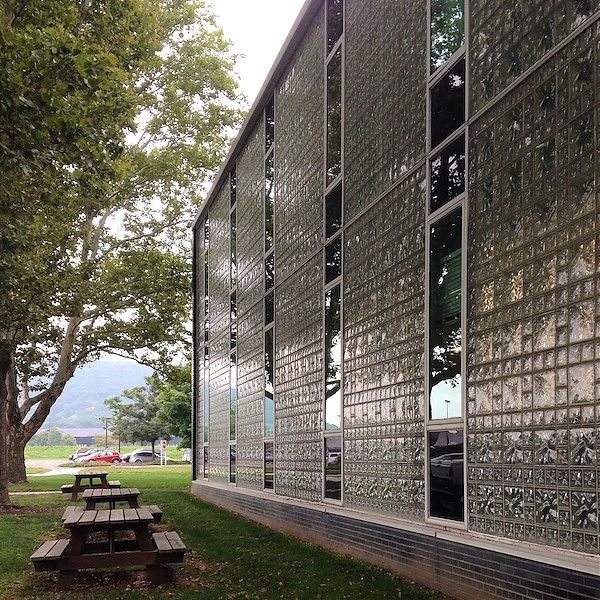
I went to Corning, NY last week to preview the latest addition to the encyclopedic Corning Museum of Glass. The North Wing, by Thomas Phifer and Partners, will open in March, and provide space to display large contemporary artwork in a largely seamless white glass box, alongside live glassblowing demonstrations in a renovated industrial building clad in black metal siding. It should be quite striking, and I look forward to going back in the spring, as well as to the museum’s 2015 retrospective on Pyrex, America’s Favorite Dish. But I was equally excited to see the rest of the Corning campus again. I first visited the museum 12 years ago, in the thick of my dissertation research on the mid-century modernist corporate campus, and was sad not to be able to include it. The Corning buildings are a textbook example of corporate architecture that speaks to the company product, as with Lever House’s custom window-washing gondolas, or Union Carbide’s black-anodized finish. As an ensemble they offer a history of 20th century glass technology.
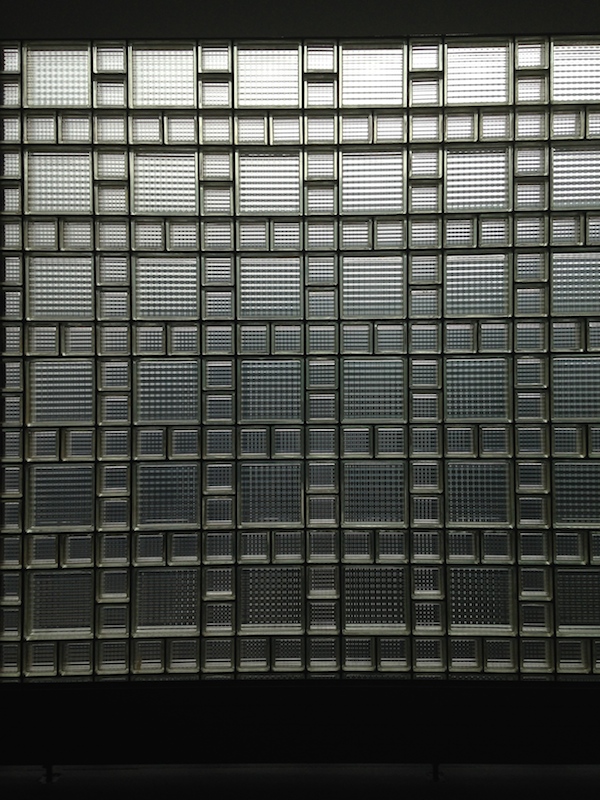

Harrison & Abramovitz did the first master plan for Corning in the early 1950s, when the company was still being run by members of the founding Houghton family. The firm designed the first museum building, as well as a research & development building (seen above), both with a pioneering glass-block facade and black glazed-brick ends. The museum building and its auditorium have now been absorbed by a later addition by Smith-Miller Hawkinson; the R&D building is not open to the public.
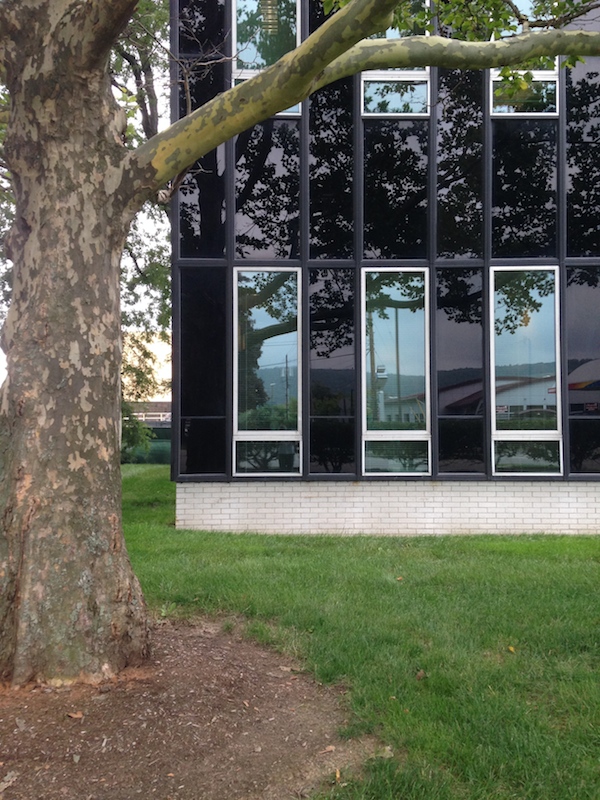

Around the parking lot from the R&D building, facing what was then a major Corning thoroughfare, Harrison & Abramovitz designed a black-glass slab tower for the company administration. In a town that still only had 10,000 people, a tower was obviously not necessary. But its form, and the still-impressively detailed curtain wall, were obviously meant to speak to the skyscrapers of Corning’s urban competitors in the Fortune 500 before the company had a Fifth Avenue building of its own (see below).


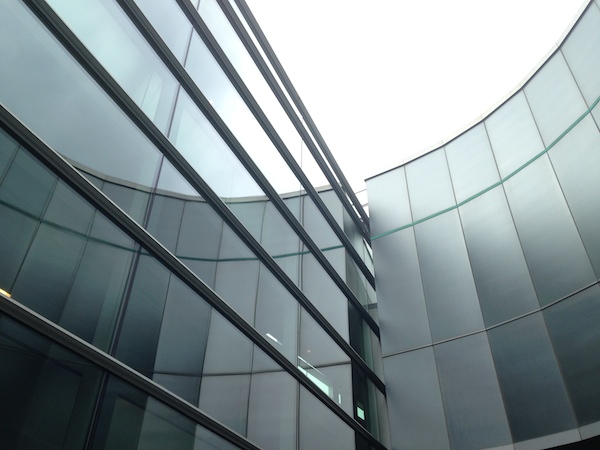

In 1976 Corning asked Gunnar Birkerts to add on to the existing museum. He took the existing 20-foot grid and ran it through Frank Stella’s Protractor series, adding curves and continuing the tradition of glass buildings focused within. Raised above the flood plain on pilotis, Birkerts’s building is space-age without and velvety within, carefully controlling the lighting and display of the company’s incredible collection of historic glass objects. The exterior panels are glass-over-stainless steel, with a bottom flange of mirror, allowing for daylighting without direct light or skylights. Below the building Birkerts cut its shape out of the lawn, so a gravel surround imitates the sharp angles and curves above. I think it’s wonderfully weird, like all the best Birkerts.


The museum collection is expertly installed, and while curators like to distinguish between art glass, design objects, and teaching exhibits, I found the categories easily blurred. Here, for example, you see a screen once installed in the Corning Glass Building on Fifth Avenue (also by Harrison & Abramovitz, 1959), now in the museum, as well as an explanatory piece on Pyrex, demonstrating the color change in the material depending upon the temperature to which it is heated. At top you see that company’s best-selling, opaque white baking dish, after a trip through clear, to amber, to smoked. My grandmother has one and yours probably does too.
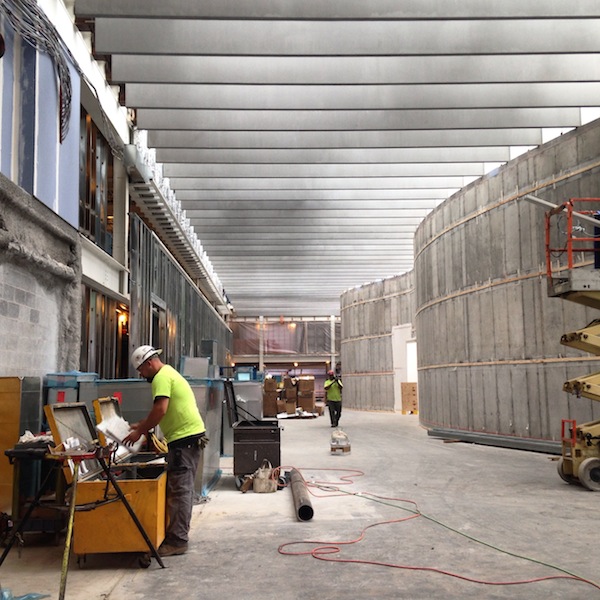

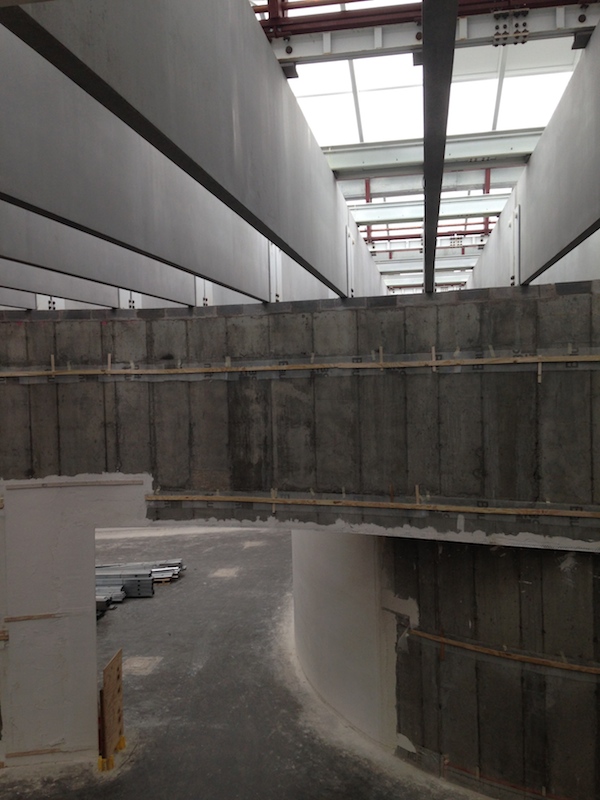
Finally, a few images from the construction, showing what will be inside Phifer’s white glass box: a set of curving concrete walls, inspired by the favorite architect wedding gift of all time, Alvar Aalto’s Savoy vase. Artworks in these galleries will be daylit from above through a set of translucent and transparent skylights; large windows in the box will allow for views out. The curves allow for a number of interesting interior paths and views. Among recent acquisitions that will be on display next year: “Liza Lou’s Continuous Mile.”: http://www.cmog.org/press-release/corning-museum-glass-acquires-monumental-work-liza-lou Four-and-a-half million black glass beads woven into a mile of cotton rope. The work’s minimalism, restricted color palette, and commentary on the labor of making all seem exceptionally well-chosen for this venue.
On X
Follow @LangeAlexandraOn Instagram
Featured articles
CityLab
New York Times
New Angle: Voice
Getting Curious with Jonathan Van Ness